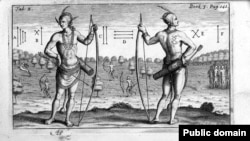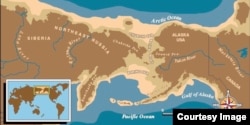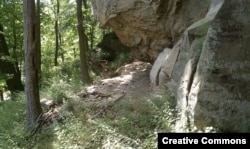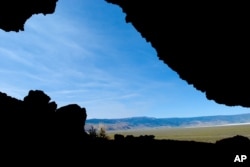It’s one of the most contentious debates in anthropology today: Where did America’s first peoples come from — and when? The general scientific consensus is that a single wave of people crossed a long-vanished land bridge from Siberia into Alaska around 13,000 years ago. But some Native Americans are irked by the theory, which they say is simplistic and culturally biased.
The first European explorers to reach the Americas looked to the Bible to explain the origins of the people they encountered and misnamed “Indians.” Biblical tradition holds that humans were created some 4,000 years ago and that all men descend from Adam — including indigenous peoples whom Europeans regarded as primitive.
“Dominant science believed in a concept of superiority,” said Alexander Ewen, a member of the Purepecha Nation and author of the “Encyclopedia of the American Indian in the Twentieth Century.”
“And that created an idea that either people were genetically inferior or that there were stages of civilization, and Indians were at a lower stage,” he said.
Since “primitives” weren’t sophisticated enough to have sailed the oceans, early scientists concluded Indians had reached North America by some unknown land route. They found their answer in the Bering Strait.
Ewen says that theory cemented into dogma and persists to this day, even in the face of new discoveries and technology that suggests Indians arrived much earlier and by different routes.
“In the first place, it’s simplistic,” said Ewen. “The people in this hemisphere were -- and are -- extremely diverse, more than any other place in the world.”
Chipping away at a theory
In the 1930s, scientists examined a pile of mammoth bones in Clovis, N.M., where they found distinctive spear points. Since then, tens of thousands of “Clovis points” have been found across North America and as far south as Venezuela. Scientists decided the Clovis people must have been America’s first peoples, arriving 13,000 years ago.
Excavations in the 1970s pushed the date even further back, to as much as 16,000 years ago. Archaeologist James Adovasio dated artifacts found at Pennsylvania’s Meadowcroft Rockshelter to be up to 16,000 years old, to harsh criticism.
Other branches of science have weighed in: In 1998, University of California-Berkeley linguist Johanna Nichols argued that it would have taken up to 50,000 years for a single language to diversify into the many languages spoken by modern Native American groups. That meant ancient Indians would have to have arrived 19,000 years ago.
Geologists have complicated matters by suggesting that the Bering Strait wasn’t passable until 10 or 12,000 years ago. This gave way to theories that early humans might have sailed down the Pacific coast into the New World.
Meanwhile, in 2015, Harvard University geneticist Pontus Skoglund discovered DNA links between Amazon Indians and the indigenous peoples in Australia and New Guinea.
In the past decade, Smithsonian Institution anthropologist Dennis Stanford met scathing criticism for suggesting Stone Age Europeans paddled across the Atlantic thousands of years before Columbus. In April of this year, researchers in California analyzed crushed mastodon bones they said were butchered by humans 130,000 years ago, a theory the bulk of scientists, including Adavasio, rejects – not because it’s not possible, he stipulates, but because the data isn’t conclusive.
Native American accounts
Should science consider the origin beliefs of tribes themselves?
Montana’s Blackfoot tradition holds that the first Indians lived on the other side of the ocean, but their creator decided to take them to a better place. “So he brought them over the ice to the far north,” the account reads.
The Hopi people of Arizona say their ancestors had to travel through three worlds, finally crossing the ocean eastward to a new and final new world. And Oklahoma’s Tuskagee people believe the “Great Spirit” chose them to be the first people to live on the earth.
Stories like these aren’t given much weight by science, said Joe Watkins, supervisory anthropologist at the National Park Service and a member of the Choctaw Nation.
“They are generally believed to be anecdotal,” he said. “The deep time depth and the possibility of multiple interpretations seem to make scientists uncomfortable.”
That isn’t to say Watkins believes every tribal tradition is “true.”
“But I do believe most of them carry within them kernels of truth of use to researchers. It seems imprudent to dismiss any possible line of evidence," he said.












